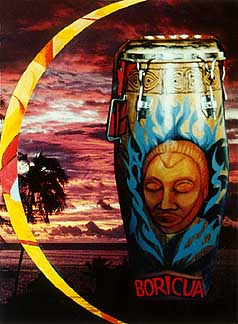Matrix Cultures
Catalog
Bookings
The Tainos of Haiti, Cuba and Haiti
“Taino society was matrilineal. Name and status were inherited from one’s mother, and social standing was reckoned such that women might outrank men, even if men usually held political power.” Mothers and grandmothers of chiefs were especially powerful. This power extended to diplomacy: “women, whether elite or not, had significant roles in such meetings and were present on many occasions as gift givers.” [Wilson, 46]
Tainas enjoyed a wide range of leadership positions and professions, including important arts like carving the duho (wooden ceremonial seats). One European chronicler reported that “it is the women who are thus employed” on the island of Ganabana, in west Haitian realm of Anacaona.
This powerful woman chief owned storehouses of full of carvings and weavings, including some gorgeous duhos polished “like black jet,” which she presented to Bartolomeo Columbus in an act that she and the Haitians (if not Columbus) probably regarded as a contract of alliance. [Ostapkowicz, 66] Other duhos “may have symbolized the relationship between a cacique and a powerful lineage of women who controlled access to political and military power.” [Wilson, 48]
Other Arawakan peoples on the South American mainland were also matrilineal, from Surinam to eastern Peru. More on this coming...
